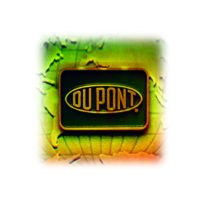Radio frequency identification is increasingly being talked about as a potential tool to authenticate products and reduce counterfeiting. But the technology has some shortcomings. For one, any person trying to confirm the authenticity of a product would need to have an RFID interrogator, or reader, and access to a network to get a product’s unique ID and check its history in an online database. For another, the tags can be removed physically from a legitimate product and placed on a counterfeit one. One company believes it can solve both problems.
DuPont Authentication Systems (DAS), a joint venture between DuPont and Keystone Technologies, has developed an anticounterfeiting technology, dubbed Izon, that uses photopolymers to create a three-dimensional image.
|
|
Photopolymers are new carbon-based substances that are sensitive to light and can be used to create 3-D images through a process called stereolithography (a computer-controlled laser draws 3-D objects in the material). DAS has created a proprietary photopolymer that is used in the Izon authentication system, which the firm claims cannot easily be duplicated.
The 3-D image can be used to visually confirm that the item is genuine. It can also be integrated with an RFID label or tag. The benefit? If someone tries to remove the label on a legitimate item and put it on a counterfeit one, the image is destroyed.
Holograms have been an effective way to visually verify the authenticity of a product or credit card, but there are now hundreds of companies capable of producing holograms. So, any enterprising crook can pay off someone with the knowledge and equipment to create a bogus hologram.
Denis Picard, vice president of sales for DuPont Authentication Systems, believes his company is one of the few that can produce full 3-D images using photopolymers. The Izon material and technology is provided only by DAS and is maintained within a secure supply chain.
“For anticounterfeiting, you want something that can’t be simulated easily,” Picard says. “This process is protected by patents and trade secrets and it would be very hard for someone to replicate.”
Picard won’t divulge too much about how the company creates the 3-D Izon images, but he explains that it starts with a physical model of a company’s logo or other image that will be on the tag. The image is then transferred to a photopolymer. The three dimensions are so realistic that authentication markings, such as a unique serial number or watermark, can be put on the side of an object in the image (imagine a 3-D cube with a number etched into the top or side).
The 3-D image can be used alone to indicate an item is authentic, or it can be combined with an RFID tag or label for tracking and additional authentication. Picard says the technology is being used to authenticate drugs, electronics, food and other products. He says a government agency is the first to combine the 3-D image with an RFID tag. The agency will launch a pilot combining Izon and RFID in August.
Picard won’t reveal how much the 3-D authentication technology costs, because the price depends on the size of the order. But he says that in most cases, the amount is in line with what existing anticounterfeiting technologies cost. Izon might not eliminate counterfeiting, but it could add a whole new dimension to RFID.


